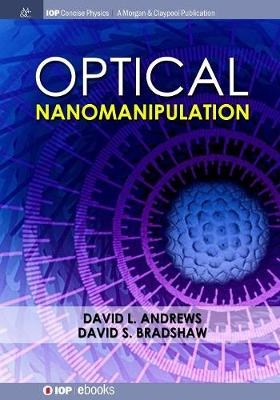
Optical Nanomanipulation
Morgan & Claypool Publishers (Verlag)
978-1-68174-464-3 (ISBN)
- Lieferbar
- Versandkostenfrei
- Auch auf Rechnung
- Artikel merken
This book provides a broad introductory survey of this remarkable field, aiming to establish and clearly differentiate its physical principles, and also to provide a snapshot portrait of many of the most prominent current applications. Primary emphasis is placed on developing an understanding of the fundamental photonic origin behind the mechanism that operates in each type of effect. To this end, the first few chapters introduce and develop core theory, focusing on the physical significance and source of the most salient parameters, and revealing the detailed interplay between the key material and optical properties. Where appropriate, both classical and photonic (quantum mechanical) representations are discussed. The number of equations is purposely kept to a minimum, and only a broad background in optical physics is assumed.
With copious examples and illustrations, each of the subsequent chapters then sets out to explain and exhibit the main features and uses of the various distinct types of mechanism that can be involved in optical nanomanipulation, including some of the very latest developments. To complete the scene, we also briefly discuss applications to larger, biological particles. Overall, this book aims to deliver to the non-specialist an amenable introduction to the technically more advanced literature on individual manipulation methods. Full references to the original research papers are given throughout, and an up-to-date bibliography is provided for each chapter, which directs the reader to other selected, more specialised sources.
David L. Andrews is a Professor at the University of East Anglia in the UK and leads research on fundamental molecular photonics, energy harvesting and transport, optomechanical forces, quantum and nonlinear optics. He has over 350 research papers and fifteen books to his name. The current focus of his research group is on quantum aspects of optical transmission, optical vortices and chirality, frequency conversion, optical nanomanipulation and switching, optically nonlinear mechanisms in fluorescence, and energy transfer processes. Professor Andrews is a Fellow of the SPIE, the Optical Society of America, the Royal Society of Chemistry, and the Institute of Physics. He is also a member of the Board of Directors of SPIE. David S. Bradshaw is an honorary research associate at the University of East Anglia in the UK. He graduated twice from the same university, first receiving a Master's degree in chemical physics (which included a year at the University of Western Ontario, London, Canada) and then a PhD in theoretical chemical physics. Overall, David has co-written 80 research papers, including book chapters, all based on molecular quantum electrodynamics. He has also created a website explaining the key physics in this theory. His long running interests include optical trapping, resonance energy transfer, optical binding and nonlinear optics. David is a Member of the Institute of Physics and the Royal Society of Chemistry.
Front matter
Nanomanipulation: why optical methods are best
Key properties of the radiation
Optically induced mechanical forces
Laser cooling and trapping of atoms
Dielectric and metal nanoparticles: Rayleigh regime
Larger nanoparticles: Lorenz–Mie regime and beyond
Optical trapping arrays
Orbital angular momentum, optical vortices and torques
Structured light: particle steering, traction and optical lift
Optofluidics: lab-on-a-chip mixing and actuating flow
Vortex plasmons and light-induced ring currents
Optical binding
Past, present and future
Bibliography
| Erscheinungsdatum | 27.01.2017 |
|---|---|
| Reihe/Serie | IOP Concise Physics |
| Verlagsort | San Rafael |
| Sprache | englisch |
| Maße | 178 x 254 mm |
| Gewicht | 220 g |
| Themenwelt | Naturwissenschaften ► Physik / Astronomie ► Atom- / Kern- / Molekularphysik |
| Technik ► Maschinenbau | |
| ISBN-10 | 1-68174-464-3 / 1681744643 |
| ISBN-13 | 978-1-68174-464-3 / 9781681744643 |
| Zustand | Neuware |
| Informationen gemäß Produktsicherheitsverordnung (GPSR) | |
| Haben Sie eine Frage zum Produkt? |
aus dem Bereich


